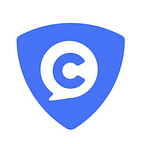Why do we need a decentralized digital identity(CID)
On June 30, a hacker posted that he had the 2022 police database of a city in Asia, including the data and information of one billion citizens. The database, which has a capacity of 23TB and is priced at 10 BTC, contains the names, addresses, places of birth, ID numbers, cell phone numbers, and even criminal records and case details of citizens. This is not the first data leakage accident this year, and definitely will not be the last.
Web2’s popularity brings us a lot of innovation and convenience, but it is undeniable that, while enjoying the service, also faces the risk of privacy exposure, and personal data autonomy, which has gradually become an unattainable thing. The protection of user privacy and the return of user data autonomy is what ComingChat has been working to achieve.
So, how do we achieve it?
In ComingChat, users have a decentralized account system which is different from the traditional model — CID(concise decentralized identifiers). CID is a new type of identifier that can be implemented and verified for the Web3 network world. It allows individuals or organizations to have full ownership, management, and control of their digital identity and their data.
It has the following characteristics;
1, Easy to read and remember. It usually consists of 1–12 digits. Currently, users can register a 5-digit CID at appcid.coming.chat, or download ComingChat and register a 10–12 digit CID. You can also go to the Comfuture marketplace at https://comfuture.coming.chat/ to trade the desired 6- 12-digit CIDs.
2, Decentralized and private. Anyone can create without permission and without revealing any personal information. There is no need for KYC, which puts people in a dangerous position, no data, and user information collection, and individuals can manage their own identity autonomously.
3, Compatibility. CID is built on ChainX’s EVM chain and is compatible with other public chains at a very low cost.
4, Lightweight. CID is a smart contract running on ChainX’s EVM chain, which is extremely programmable and scalable.
It has a very wide range of usage scenarios.
1, As a cryptocurrency receiving account.
ComingChat currently supports EVM, BSC, BTC, Substrate, Cosmos, and other chains and is being improved continuously, with the goal of making it an omnichain wallet where different assets from different chains can be kept in ComingChat.
2, Reputation aggregation across multiple chains.
Unlike the isolation of Web2’s social platform, the user’s behavior on one platform does not affect the behavior on another platform. CID can aggregate the reputation of users on different chains, aggregate the reputation of all addresses of the same user on all public chains, and make a quantitative assessment of the user’s reputation based on the past behavior of the user’s address, thus deciding the level of service to be provided.
3, As login credentials
In the Web2 era, users who wanted to have digital identities for different platforms needed to fill in information repeatedly and create different accounts. Different Internet platforms established different account systems, which were independent of each other and easy to form ‘Isolated Island’. In contrast, in Web3, in ComingChat, each CID account is associated with at least one pair of public and private keys. Login to DApps can be signed by using the private key associated with the CID for the login operation.
4, Building a purer end-to-end encrypted communication system
Since each CID is associated with at least one pair of public and private keys, this naturally forms the basis for sending end-to-end encrypted messages. ComingChat’s encrypted group chat communicates through the KDF ratchet algorithm plus a public key signature. When a member sends a message, it first uses the algorithm to generate a message key to encrypt the message, then uses the private key to sign the message, and then sends the message to the server, which sends it to other members. When other members receive the encrypted message, they need to use the sender’s signature public key to verify it, and then use the message key to decrypt it after successful verification. It truly realizes the end-to-end communication encryption protocol, which is the most secure communication protocol in the world, and no third-party server can view the communication records.
In the context of the web3 era coming closer and closer to us, a comprehensive individual identity recognition system is equivalent to the industry’s ‘infrastructure’ and is an indispensable core component of the web3 world. CID can also facilitate our financial services, allowing users to enjoy centralized services in a decentralized world.
About ComingChat
ComingChat’s mission is to build a metaverse for the entire ecosystem. With the economic structure of Bitcoin, it aims to reshape the digital economy system for billions of people around the world by building a simple, secure, and private global payment system and financial infrastructure. It further strengthens the interaction between the Internet and the real world by serving as a gateway for users to enter the Web3.0 world where a programmable identity system is established with CID as users’ digital identity, thus achieving unprecedented interoperability.
It will be a trustworthy, and user-centered metaverse platform that enhances user interaction services including:
- Decentralized social system
- Bitcoin wallet
- GameFi
- NFT ecosystem
- DApp
